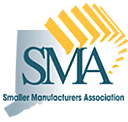International Students Are Half of UConn MBA Class of 2013
/The Class of 2013 student profile for the University of Connecticut’s School of Business provides interesting insight into those going through UConn to make their mark on the business world. The university’s website reports the stats are an indication of the program’s “success in recruiting top-notch talent from a myriad of backgrounds.” Of particular note:
- 69% of the students are male, 31% are female
- 50% are from the United States, 50% are international students
- Among the states represented are Connecticut, Florida, New Jersey, New York, Utah, Virginia and Wisconsin
- Among the nations represented are China, India, Japan, Serbia, Taiwan, Thailand, Vietnam and the U.S.
- The undergraduate degrees of the MBA students are 31% business, 21% humanities/social studies, 17% engineering, 11% math/physical science, 7% economics, and 2% information science/computer science.

- The average years of work experience is 5.1
- The average age is 28
The UConn School of Business was recently ranked among the Top 40 programs in North America and Top 200 worldwide for three graduate programs. The rankings were awarded by Eduniversal's Top 200 "Best Masters and MBA Worldwide" 2012-2013, which provides a global overview of the best post-graduate programs in 30 specializations in 153 countries. The programs and rankings were:
- Top 200 Best Masters in Engineering and Project Management Global Ranking:
- MSc in Business Analytics and Project Management - #35 in North America
- Top 200 Best Masters in Business and Commercial Law Global Ranking:
- MBA/JD Degree Program - #37 in North America
- Top 200 Best Masters in Executive MBA Global Ranking
- Executive MBA Program - #40 in North America
All of which are numbers and notoriety to ponder when encountering students coming and going from UConn's distinctive School of Business in downtown Hartford.









































